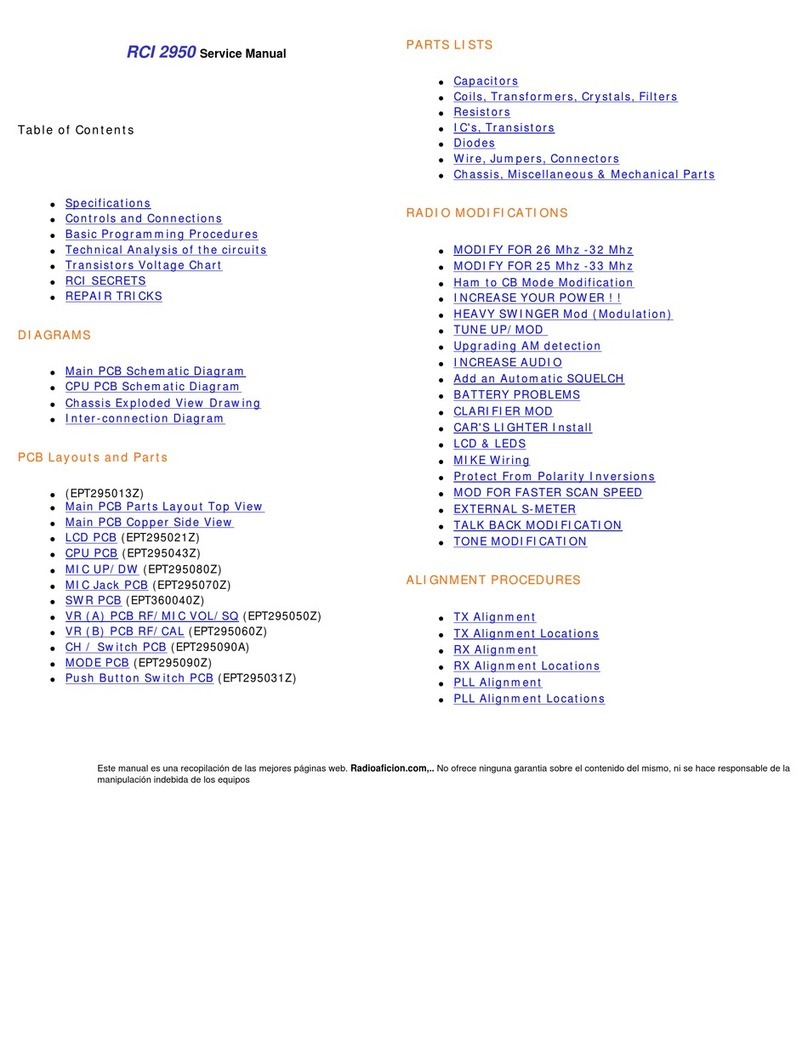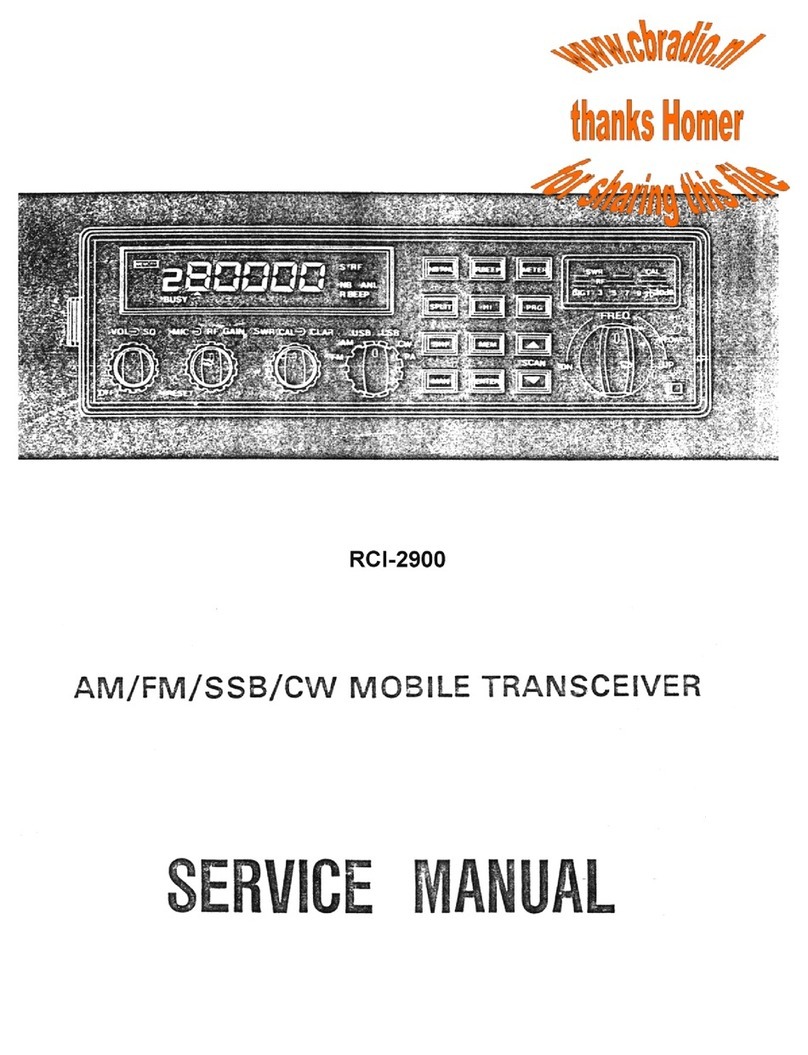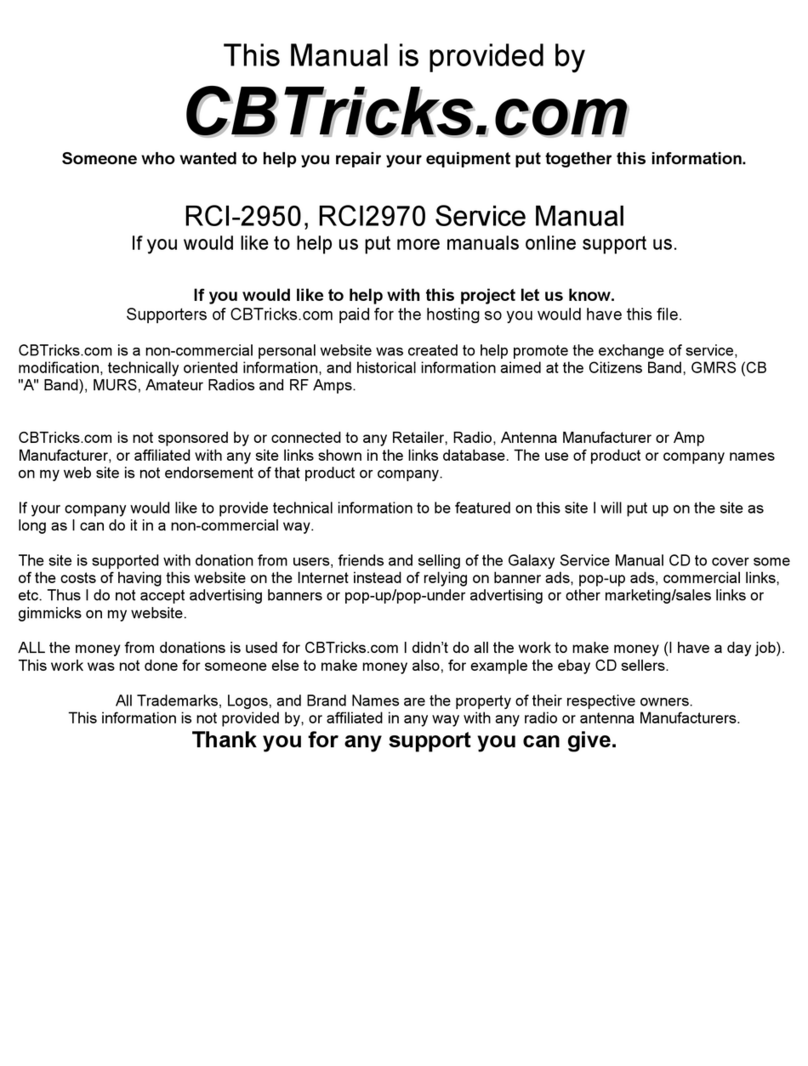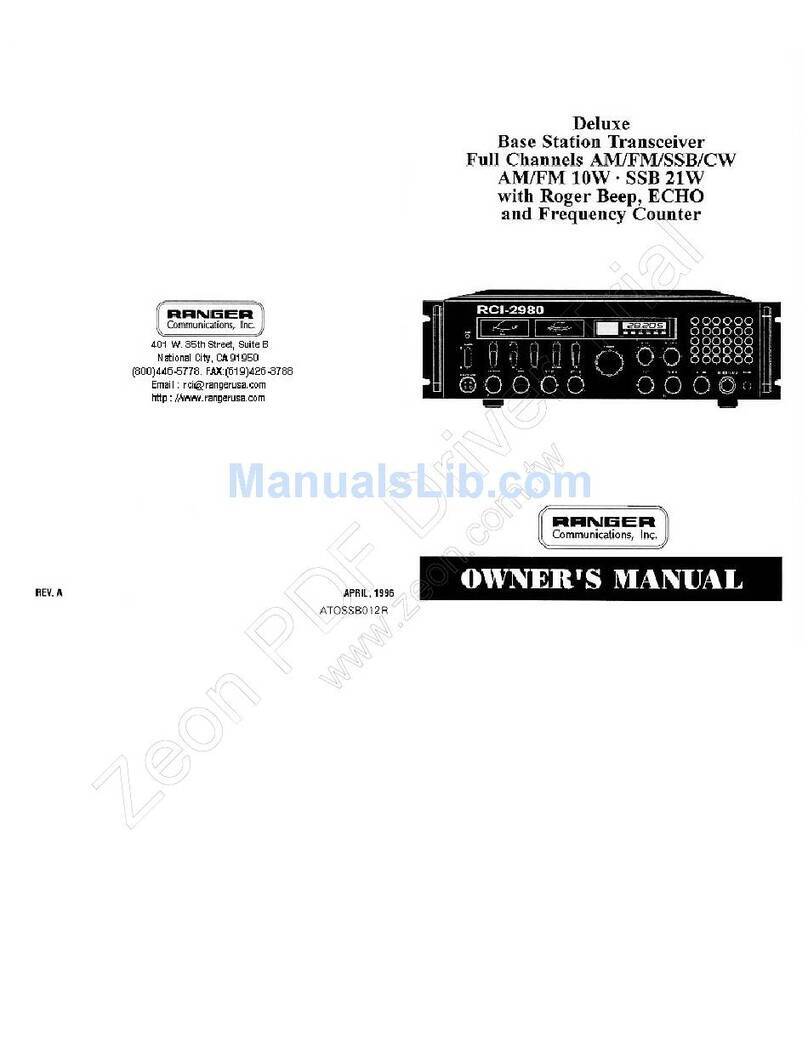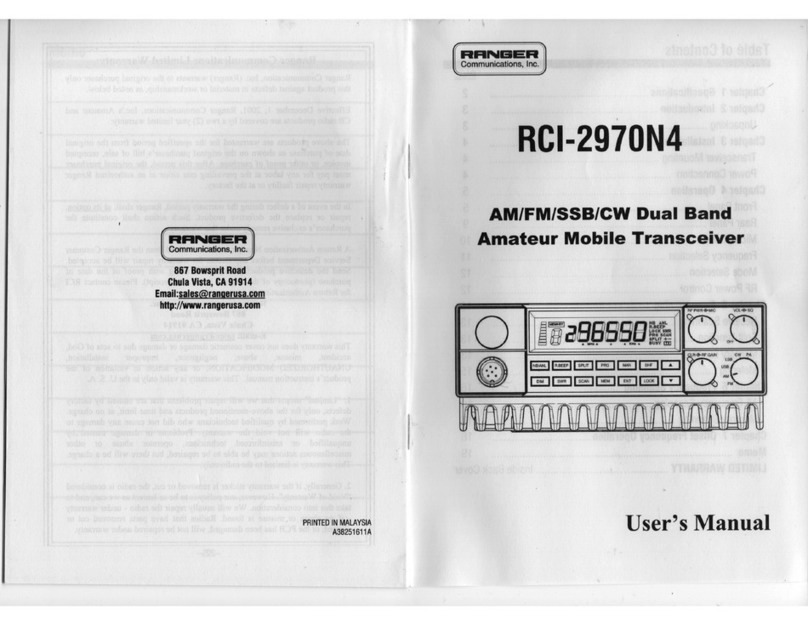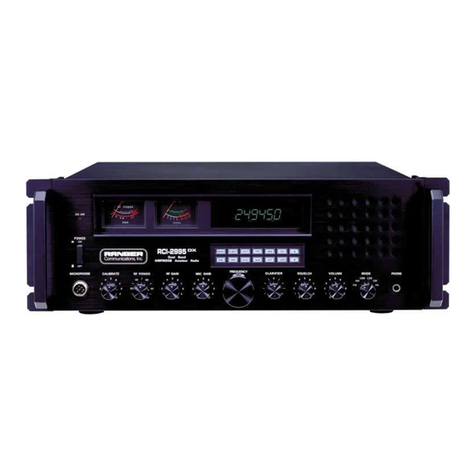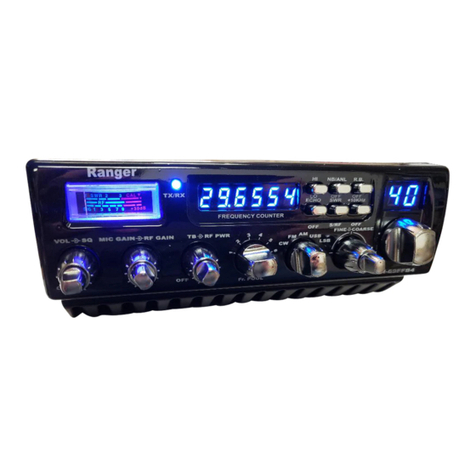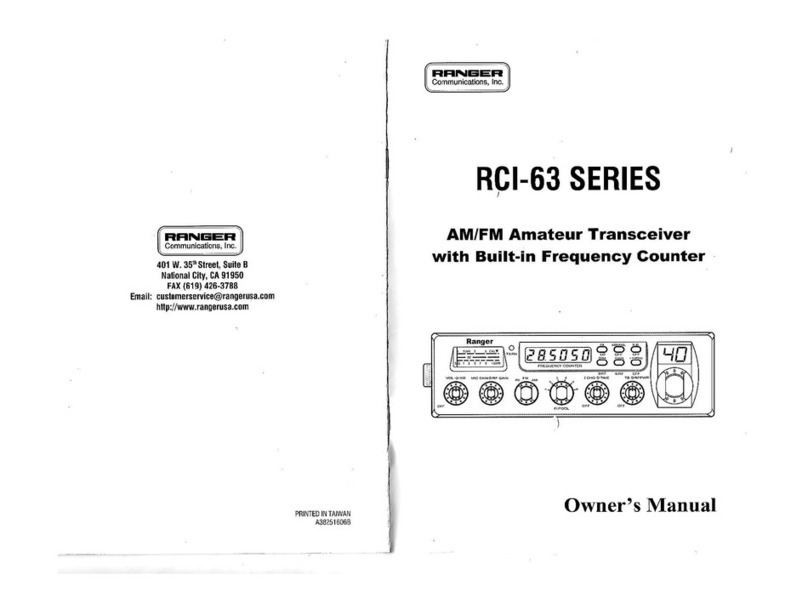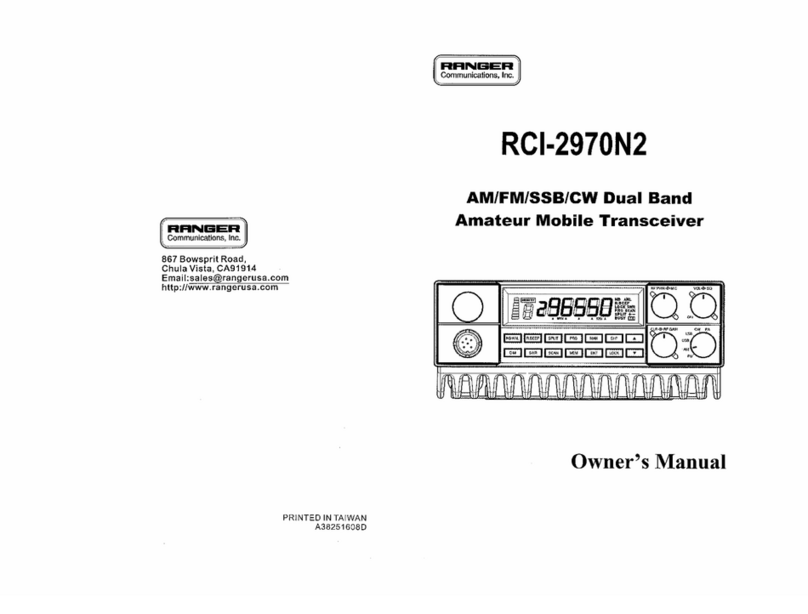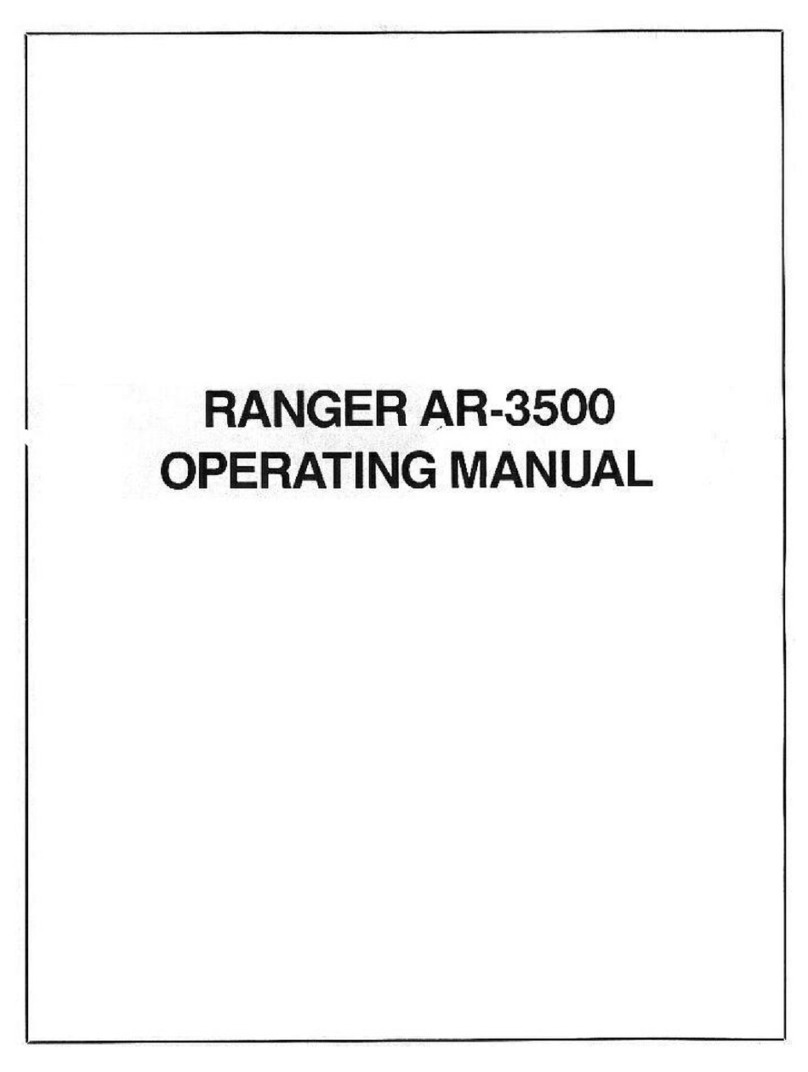
- 1 -
SS-3900EGHP
CHAPTER 1
SPECIFICATIONS
1.0 GENERAL
Model SS-3900EGHP
Frequency Range 10 Meter: 28.015 ~ 28.465MHz
Emission Modes AM(A3)/FM(F3)/LSB,USB(A3J)/CW(A1)
Frequency Control Phase Lock Loop (PLL) synthesizer
Frequency Tolerance ±0.005 %
Frequency Stability ±0.001 %
Operating Temperature Range -30°C to +50°C
Microphone Plug-in (4 pin), Dynamic PTT, 500 Ω
Meter Function Meter shows relative signal strength, RF output power
and SWR level.
Input Voltage 13.8V DC nominal ±15%
Transmit Current Drain: AM Full Mod. < 5A
Receive Current Drain: Squelched
Max. Audio Output
< 0.6A
< 1.2A
Antenna Connector UHF, SO239
Dimensions 7-7/8”(W) x 10-3/4”(D) x 2-3/8”(H)
Weight 5 lb.
1.1 TRANSMITTER
RF Power Output AM/FM/CW: 9W RMS ; SSB: 25W PEP
RF Transmit Modes AM/FM/SSB/CW
Modulation A3E/16F3/J3E/A1A
Harmonics And Spurious Emissions > -50 dB
Carrier Suppression > -35 dB
Audio Frequency Response 300 to 2500 Hz
Antenna Impedance 50 Ohms
1.2 RECEIVER
Sensitivity AM: < 1.0 µV For 10dB S+N/N
FM: < 0.5 µV For 12dB S+N/N
SSB/CW: < 0.5 µV For 10dB S+N/N
Intermediate Frequency 10.695 MHz (AM-1st, SSB), 455 KHz (AM-2nd)
Image Rejection > 50 dB
Adjacent Channel Selectivity > 60 dB
RF Gain Control 45 dB adjustable for optimum signal reception
Automatic Gain Control (AGC) Figure Of Merit >70 dB for 50 mV for 10 dB Change in Audio Output
Squelch Adjustable; threshold less than 0.5 µV
Noise Blanker RF type
Audio Output Power 2.5W @ 10% THD
Audio Frequency Response 300 to 2500 Hz
Built-in Speaker 8 Ohms, 4 Watts
External Speaker (Not Supplied) 8 Ohms, 4 Watts
(SPECIFICATIONS SUBJECT TO CHANGE WITHOUT NOTICE)

